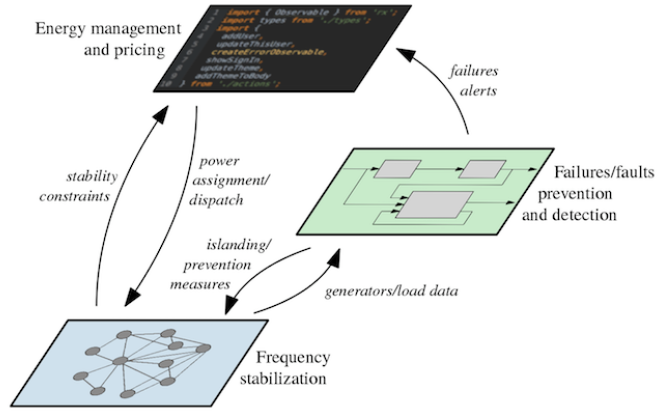In the future, the way the power grid is currently managed will have to change radically. Indeed, pressing environmental problems and the path towards a sustainable economy will see an increase in use of renewable sources, cogeneration plants, and smart loads, able to learn from the user habits and adapt to their needs. Current management and control strategies are already showing limitations in guaranteeing a constant high-quality of service (QoS) and maintaining stability. This hinders the potential of renewable resources and the energy management possibilities offered by new plants and smart devices. Also, significant shares of renewable sources cannot be further integrated in the grids with the current management strategies, as these types of sources cause severe instability problems due to their unreliability/uncontrollability. Advanced technological improvements are urgently needed to increase the renewable share and consequently boost the whole associated green economy.
The overarching goal of this project is the development of new distributed control strategies capable of coping with these new challenging scenarios and tame the collective behavior of power grids, preventing grid failures and faults, and promoting the development of a truly green economy. In this project, the power grid will be viewed as a complex evolving multi-agent system composed of a large number of different types of generators, loads, and transmission lines. Despite uncertainties, fluctuations and disturbances, the grid must maintain a desired operating regime guaranteeing the required QoS to the final users. We will then synthesize a cyberlayer of low and high level controllers capable of communicating and cooperating among each other. Such an architecture will be used to deploy automatic interventions for stabilization, renewable sources and advanced energy storage integration, and for preventing (or minimizing the impact of) possible anomalies or failures.
The aim of the project will be achieved through the cooperation of a multidisciplinary consortium of 6 research partners. These are the Italian Universities of Naples, Padova, Catania, Pisa, Sannio, and the Polytechnic University of Turin. The research staff participating to the project have complementary expertise and know-how on control of nonlinear and network systems, estimation and identification, power systems, modeling and network science.

Goals
The project is articulated into the following goals.
- Modeling power grids for control synthesis: Derive appropriate agent-based models for the synthesis of the various control layers and the effects that malfunctioning and failures have on the grid dynamics.
- Synthesis of distributed control strategies: Design different control layers and integrate them into a unique control architecture for the power grid.
- Detection and prevention of failures and faults: Determinate the effects, on the distributed algorithms developed during the project, of failures either due to overloads of the power transmission lines or communication faults.
- Validation: Verify that the models and control strategies developed in the fulfillment of other objectives are accurate and actually work when used to run physical power grids.







